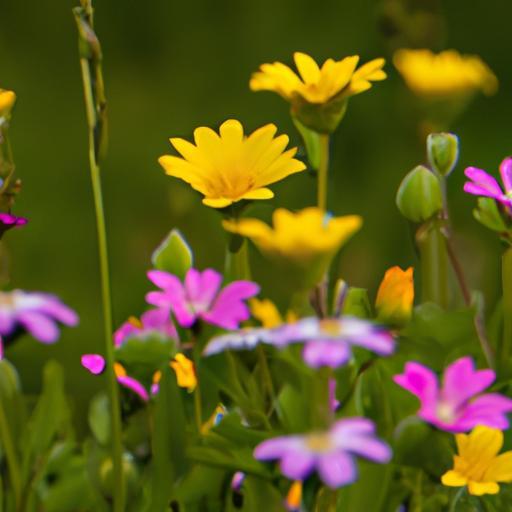Wildflower Meadows: Nature’s Vibrant Tapestry Unfolds

“`html
As the dawn breaks over vast fields and a soft breeze caresses the tall grasses, an extraordinary transformation begins to unfold in nature. Wildflower meadows, alive with vibrant colors and dynamic life forms, showcase Mother Nature’s artistry, creating a stunning display that reflects the richness of biodiversity. These mesmerizing landscapes provide crucial habitats for countless organisms—from pollinators flitting among blossoms to animals grazing in serene pastures—and invite us to experience their exquisite beauty. Each flower and its lively shades tell a story of resilience, growth, and balance inherent in our ecosystem. In this article, we will investigate the vital contributions of these captivating meadows to our environment and examine the complex relationships thriving within them. Join us as we celebrate the intricate tapestry formed by wildflower meadows—a symbol of nature’s creativity and an invitation to explore its wonders just beyond our homes.
Understanding Wildflower Meadows: Ecology and Biodiversity
Wildflower meadows are not merely picturesque landscapes; they function as essential ecosystems brimming with vitality. These colorful patches support an immense variety of species, thereby playing a critical role in enhancing biodiversity. Within these vibrant fields exists a complex network connecting plants with pollinators and other wildlife; for example, indigenous bees along with butterflies flock to these flowers which provide both nectar—their primary food source—and pollen necessary for reproduction. Furthermore, such plant diversity fosters populations of herbivores alongside their predators—creating overall ecological balance.
The ecological significance of wildflower meadows extends far beyond mere aesthetics—they actively promote soil health while aiding water retention capabilities that combat drought conditions effectively. Additionally, they serve as natural filtering systems that minimize runoff while managing nutrient levels within various environments. Consider these key elements underscoring their ecological contributions:
- Habitat for Pollinators: Essential shelters catering specifically to bees, butterflies,and other vital pollinators.
- Diverse Flora Composition: Enhances resilience against pests while combating disease outbreaks.
- Nutrient Enrichment: Helps build organic matter content whilst decreasing soil erosion risks.
- Aid in Water Management: Improves groundwater recharge methods leading towards reduced flooding situations.
| Name of Plant Species | Attracted Pollinators | ||
|---|---|---|---|
| Sneezeweed (Helenium) | Xerces bumblebees & Honeybees | Moth Mulleins (Verbascum) 1 | Moths & Bees}. , Creating Your Own Wildflower Meadow: A Comprehensive GuideEstablishing a wildflower meadow in your own backyard offers an enriching way to connect with nature while fostering local biodiversity. To begin, choose an appropriate space that receives ample sunlight and features well-drained soil. Clear away any pre-existing grass or weeds, and consider conducting a soil test to assess its pH level and nutrient content; this information will guide you in selecting the most suitable wildflower seeds for your environment. Focusing on native species that naturally thrive in your area can greatly enhance the success of your meadow, as these plants require less maintenance while attracting vital pollinators like bees and butterflies. With your site prepped and the right seeds at hand, it’s time to plant them. Disperse the seeds evenly across the prepared soil for optimal coverage by following these planting tips:
Pactience is key after seeding—be sure to keep the area moist but not saturated since germination may take some time. As your wildflowers burst into bloom, take joy in their brilliance and diversity which enhance your outdoor space.
Protecting Nature’s Beauty: Conservation Initiatives for Wildflower MeadowsThe vibrant ecosystems we know as wildflower meadows play an essential role supporting diverse species of plants and animals. Strong conservation measures are necessary to protect these precious landscapes from threats such as urban sprawl, invasive species encroachment, and climate fluctuations. Recognizing their ecological significance leads us toward efforts aimed at preserving these natural habitats, which provide myriad benefits including:
Sustaining our wild flowers requires active involvement through habitat restoration initiatives, community outreach programs aimed at raising awareness, as well as collaborations among various conservation entities. Community engagement plays a crucial role; localized participation fosters sustainable practices through initiatives such as:
|

